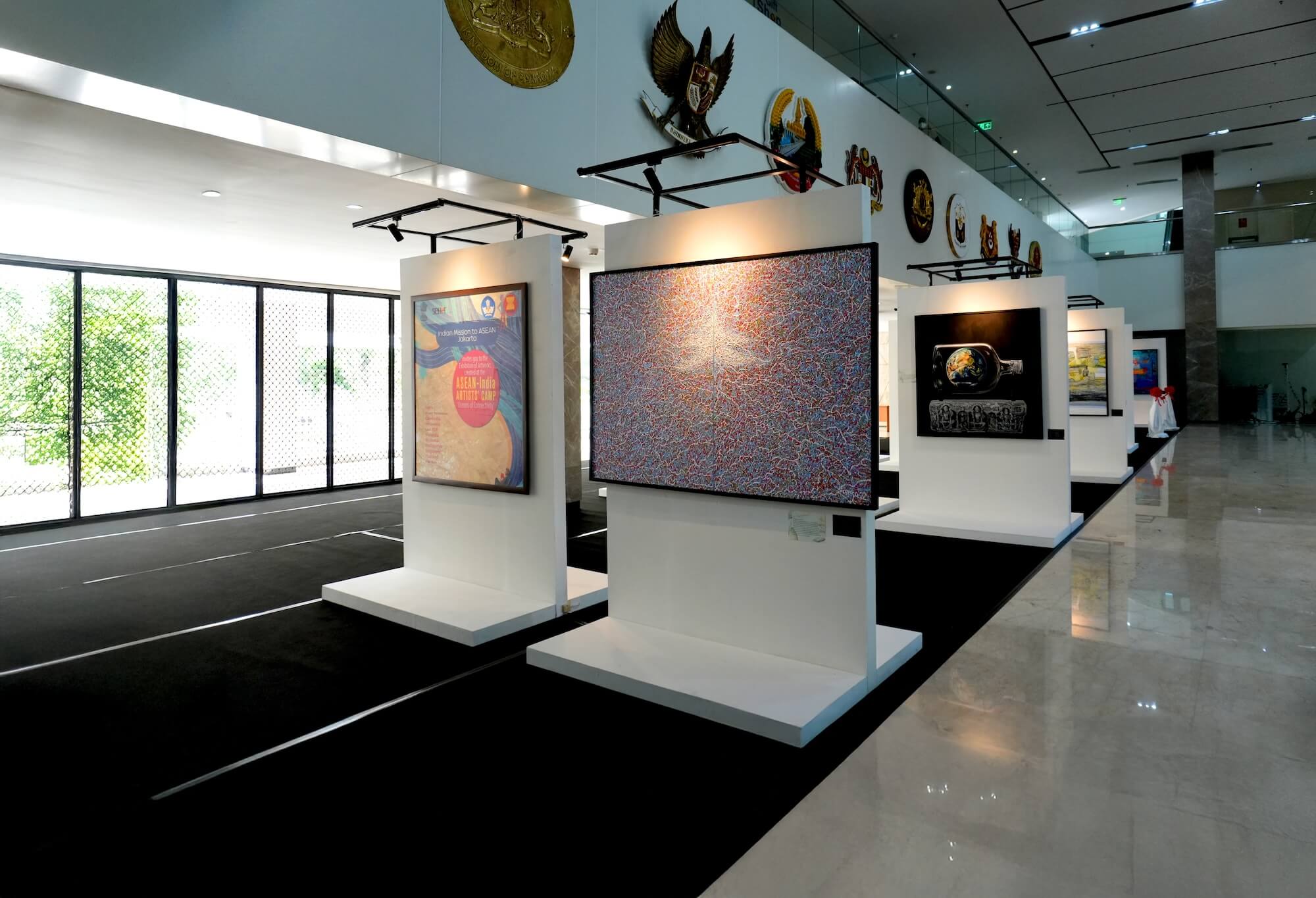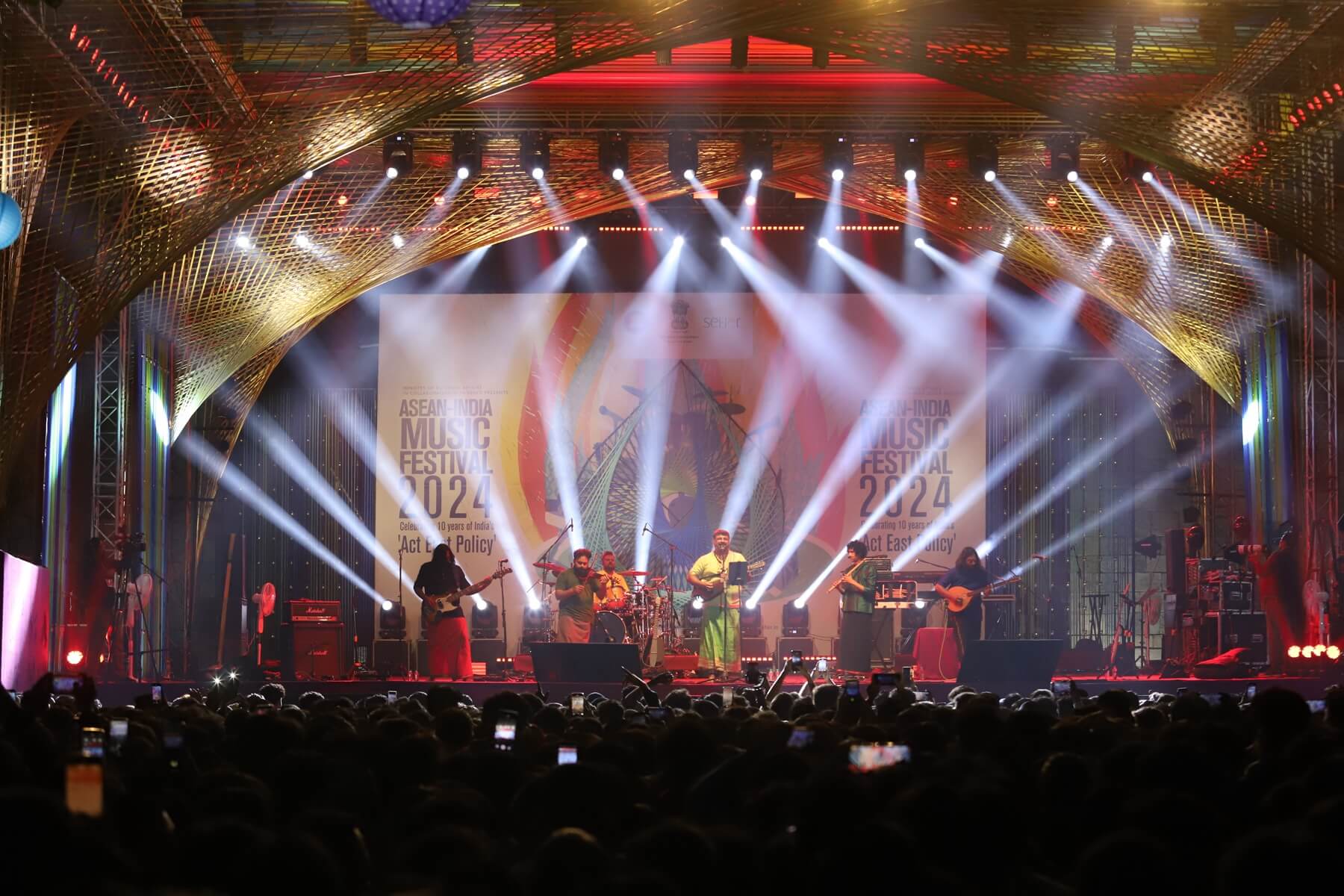




The monsoon winds that blew trading ships from India to Southeast Asia over the centuries also ushered in a deep cultural relationship that has continued until today. The maritime route began at either the Coromandel coast or the coast of the Bay of Bengal and continued to Cape Comorin and Straits of Malacca to reach the Malay Peninsula. There was also a land route via Bengal, Assam, Manipur, and Burma (now Myanmar) that reached different parts of Southeast Asia.
Coedes’ Indianized States of Southeast Asia provides a rich detail of Southeast Asia’s links with India, which date back to over 1000 years. The earliest contacts noted were of Buddhist monks sent by Emperor Asoka to Myanmar in the 3rd century BC. More evidence of connections between India and Southeast Asia were found in later years. Among the earliest Hinduized states was the Kingdom of Funan, which f lourished between the 1st to 6th centuries. It covered portions of presentday Cambodia, Thailand, and Viet Nam.
Sanskrit writing dating back to the 4th century can be found on stone pillars in Eastern Borneo. The 5th century collections of Pyu inscription in Lower Myanmar is also in Sanskrit. The royal edicts in 6th century Sumatra were written in the local Malay language using Indian script.
Indian influence is also evident in various World Heritage sites in the region, such as the Angkor Wat in Cambodia, the Borobudur in Indonesia, and the Ananda temple in Myanmar. These monuments were constructed in the 7th and 8th centuries. It is believed that the various medieval courts in the region hosted Indian artisans from Kalinga, modern-day Orissa who helped build these legendary monuments. Many of the motifs on the walls of Borobudur and Angkor Wat are noted to resemble carvings of Konarak and other medieval temples of eastern India.
By 1000 AD, there was a well-established trade relationship between Tamil merchants in the eastern peninsular of the Indian sub-continent with ports in Southeast Asia. In the Ramayana and other texts, referred to as Swarnabhumi, land of gold, Southeast Asia was seen as a land of riches and abundance. Other names given to areas in this region were Takkola, a market of cardamoms, Narikeladvipa, an island of coconut palms, and Karpüradvipa, the island of camphor. The search for gold and spices motivated traders to venture abroad. Technological advances, which enabled the development of seaworthy junks that could transport 600 to 700 men, further fuelled these voyages.
Hindu priests and Buddhist monks, who accompanied the traders in these voyages, helped spread Indian thought. Folklore singers and artists in the region popularised and modified Indian literary works by retelling stories and incorporating local elements. The Ramayana and Mahabharata have been changed over the years, and various versions of them are present in Southeast Asia.
India’s historical relationship with Southeast Asia continues to be studied by scholars in both regions. In addition to scholarly or journalistic accounts, Southeast Asia appears to be a source of inspiration for Indian writers who use it as a setting in their works of fiction. The same can be seen in the literature by writers from Southeast Asia’s Indian diasporic community, who weave scenes from India and various countries into their stories. Indian musical rhythms, either from ancient times or modern-day Bollywood movies, can also be heard throughout the region.
References:
Coedès, G., (1975). The Indianized States of Southeast Asia (W. Vella, Ed./S. Cowing, Trans.). Honolulu: East-West Center Press; J. Bhattacharya. (2020). Ties That Bind: India and Southeast Asia Connectivities. Education About Asia, Volume 25, Number 3, Winter 2020. Retrieved from https://www.asianstudies.org/wp-content/uploads/Bhattacharya-Winter-2020.pdf








